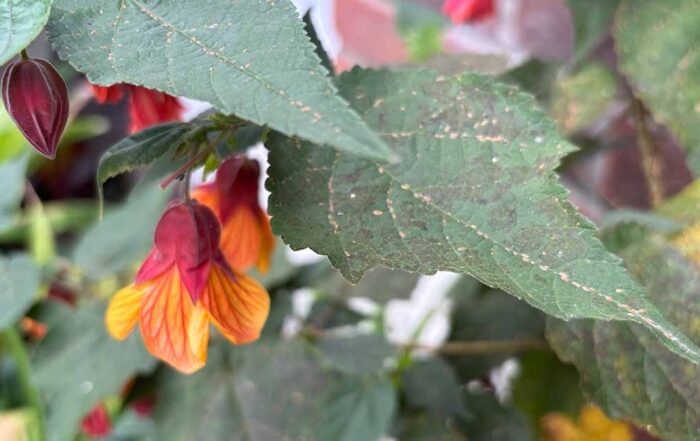Creating the perfect place for shade loving plants
With climate change heralding more extremes of weather, creating the perfect place for shade loving plants could involve the construction of a shade house. Surprising as this might seem, this doesn’t use any glass, polythene or artificial shade materials in its construction; it simply creates shelter by attaching horizontal timber lathes to a greenhouse-shaped frame.
I’ve most recently seen this used at Bourton House Garden in the Cotswolds to house a range of ferns and large-leaved shade lovers that would otherwise burn to a crisp if exposed to bright, summer sunlight. Such structures are used in other parts of the UK too, most notably in East Anglia and the South East where hot, dry summers are much more prevalent than in the north and west of the British Isles. But my first encounter with a ‘lathe house’ – as they are sometimes called – was in Lisbon, Portugal, back in the 1980s. Here, in the city’s Eduardo VII Park, I came across the Estufa Fria – quite literally ‘cold stove’, a seemingly odd contradiction in terms which translates more understandably as ‘cold greenhouse’.
What is a lathe house
Built as an adjunct to a more conventional glasshouse structure, the Estufa Fria was built into the side of an old quarry and opened initially in 1935 and renovated a number of time since then. It consists of a timber lathed roof which not only shades plants growing underneath from the heat of the Lisbon summer, but deflects any cold air which might drain into it during the winter. It creates similar conditions to those found under the massive tree canopy in the tropical rainforests and so is planted according.
Such planting would not be possible in more northern latitudes, of course, but the concept has plenty of applications. And the horizontal timber lathes offer protection in a number of different ways. The most visually obvious one of these is the shade that is cast by the lathes or battens themselves. Their effect is dependent on the spacing: the wider they are apart, the less shade is provided. Most usually the spacing is equivalent to the width of the lathes, which effectively cuts light levels by around 50% and in the UK usefully mimics the conditions found at ground level in a temperate woodland.
Of course, such shading brings with it other benefits. With less direct penetration of sunlight, there is less heat transference into the structure. And with air still able to pass through the sides and top, there is little build up of that heat as there might be in a greenhouse or polytunnel. However, the structure does reduce wind speed through the structure by filtering – another useful benefit to the plants growing inside. In addition there is less evaporation of moisture from plants and the soil and this, in turn, helps to maintain good levels of humidity inside the lathe house when compared with outside on a hot summer’s day.
Ways to protect plants from frost
But what is more surprising is the temperature benefit that is derived from a lathe house in winter. Despite not being fully enclosed, the horizontal timber battens – especially when used on a steeply pitched roof – will protect the plants inside from frost. Under clear skies in winter, cold air descends through the atmosphere, super-chilling the surface of the earth and the plants that are growing in it. This is what ultimately causes frosts to form.
The battens of a lathe house, however, deflect this descending air causing it to be shed to the sides of the protective structure. In fact surprisingly little of the cold air passes through the gaps when spaced as wide as the width of the lathes. In addition the timber itself helps to absorb some of the cold due to its own specific heat capacity.
So while greenhouses and polytunnels may eventually become too hot to use in summer, wooden lathe houses are likely to become the future in our gardens to even out extremes of temperature and provide much-needed shelter for our plants in a changing climate.
Share This Story!
Why have my dahlias stopped flowering?
By midsummer, dahlias should be starting to pump out the blooms, but I'm often asked why these normally reliable plants have stopped flowering in some people's gardens. It can even be the case that .....
Are alstoemerias good garden plants?
Although we see them regularly in bouquets of cut flowers, alstroemerias also make good garden plants. Also known as Peruvian lilies or lily of the Incas, they've not been widely grown in UK gardens, .....
Why have my dahlias stopped flowering?
By midsummer, dahlias should be starting to pump out the blooms, but I'm often asked why these normally reliable plants have stopped flowering in some people's gardens. It can even be the case that .....
What are the sticky bumps on the stems and leaves of my plant?
It can be worrying when you come across something unusual in the undergrowth, especially when it takes the form of usual bumps on stems of plants and distinctly sticky leaves! While the first inclination .....
Are alstoemerias good garden plants?
Although we see them regularly in bouquets of cut flowers, alstroemerias also make good garden plants. Also known as Peruvian lilies or lily of the Incas, they've not been widely grown in UK gardens, .....
What is the best scented flower for winter?
It's official, I have a passion for daphnes and in my opinion these are the best plants for scented flower in late winter. Don't get me wrong, they're not new to me. But they .....








